Hurdles, But Not Like The Olympics
By Cathy Koos
Hedge-laying and hurdle-making are ancient technologies in Great Britain and many parts of Europe. Hurdles, or wattles, are a wood product used since ancient times by rural folks as a livestock management tool. It’s kind of like when you have an overabundance of lemons you make lemonade. They have plenty of coppiced wood, hazel, and willows, and prior to a couple of centuries ago, they had no wire fencing. Hence, the hurdle. Think basketry on a large, very large scale.
Made in about 6-foot lengths and about three and one-half feet high, these wattles can easily be hooked over the shepherd’s shoulder and moved around a pasture to create temporary holding areas or a temporary gate by merely spiking these sections into the ground. Most hurdles had a gap at the bottom to allow lambs to feed on the other side while preventing the ewes access.
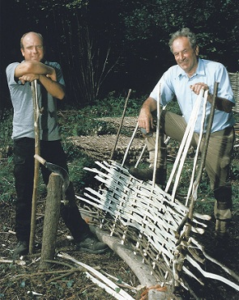
Hurdle making frame, Alan and Steve Brown,

modern day woodlot
https://www.peaktraditionalfencing.co.uk/
Back in the day, the hurdle maker or bodger spent most of his day working in the forest harvesting, coppicing, and weaving these critically needed panels for nearby farmers. While still sometimes used these days for livestock containment and sheep trials, hurdles are now also used in very artistic ways in landscaping.
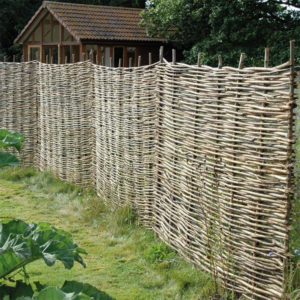
kdm-6-x-6-hazel-fencing-hurdle
https://www.earlswoodglc.co.uk/
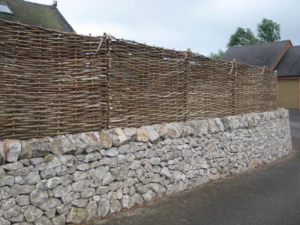
https://www.peaktraditionalfencing.co.uk/
Most native hardwood English trees, when cut back, will readily produce shoots from the stumps and eventually grow a new crop of readily available flexible poles. This technique is called coppicing. This process developed long before the invention of wire fencing as a means of keeping animals in or out of a particular area.
While we do not have some of those tree species here in America, there are other trees and pliable shrubs like willow that could be used. When my son was about twelve, he and his buddies decided to build a treehouse. They scoured our woods with a Christmas tree saw and harvested black oak poles that had regrown from an old oak stump. Using baling twine from the barn, (yes, bright blue!) they strung the poles between five young cedar trees. The floor of the tree house was salvaged two by fours from their dads’ wood piles. Then they positioned a plastic sliding board from an old playhouse and that was their emergency escape.
It also served as a bike ramp… (think ER visits and broken leg)
Unbelievably, the treehouse is still there 20 years later even after the plastic sliding board rotted away in the sun.
And so it goes with wattles. Like basketry, woodcraft and coppicing bodgers never went away, even after the convenience of wire fencing. The craft now mainly specializes in landscaping treatments, softening the visual, while gently but sturdily offering a barrier.
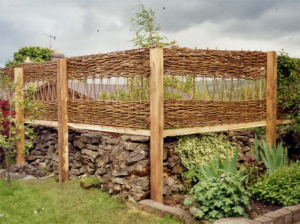
https://www.peaktraditionalfencing.co.uk/
Conservationists and modern day bodgers are valiantly maintaining their skills and bringing the next generation into the woodlot by offering courses, guild membership and education in the craft.
So the next time you prune that fruit tree or cut back that willow patch, become your inner bodger and create a thing of useful beauty (get permission first).
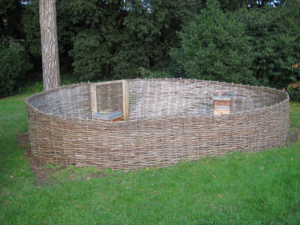
Beehive surround
https://www.peaktraditionalfencing.co.uk/products/
To learn more about managing your own woodlot of willow, oak, chestnut and hazel, explore here:
https://www.peaktraditionalfencing.co.uk/about-us/
https://www.earlswoodglc.co.uk/
https://www.smallwoods.org.uk/en/the-green-wood-centre/about/
https://www.woodlands.co.uk/about-us/contact-us
and on Twitter @alihayhurst